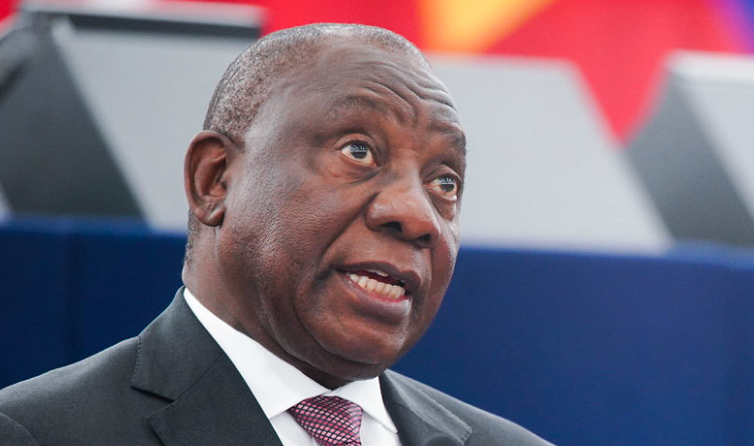News
Global Just Energy Transition Needs a Mining Boom, SA Must Get its Act Together
If the South African mining sector is going to capture a share of the growing international demand for critical minerals, it will have to address the issues that undermine its attractiveness and competitiveness as a mining jurisdiction.

In today’s rapidly unfolding geopolitical landscape, the term ‘critical minerals’ has become a focal point for discussions about renewable energy technologies and the supply chains that support the global energy transition. Critical minerals are essential for many renewable energy technologies and include minerals such as copper, nickel, cobalt and lithium.
While there are uncertainties about the pace of the energy transition, there is no way to decarbonise our energy systems without a critical mineral mining boom which will result in a significant redeployment of investment and capital across global supply chains.
Due to concerns about climate change, supply chain vulnerabilities and growing economic competition between the United States and China, the need to produce and secure these minerals has become a geopolitical priority for many governments.
In both the US and Europe, overdependence on Chinese mineral supply chains is seen as a strategic vulnerability, and both actors have expressed their desire to de-risk their supplies by diversifying away from China.
The desire of industrialised economies to diversify their supplies in this way offers an opportunity for mineral-rich African countries, such as South Africa, to strengthen their position as alternative suppliers of these minerals.
This sentiment is echoed by the director of the Project on Critical Minerals Security at the Centre for Strategic and International Studies in Washington, DC, Dr Gracelin Baskaran, who recently said: “I don’t believe any country should dominate supply chains the way China has. Minerals can be something on which African countries – and emerging markets as a whole – can truly take a ‘non-aligned’ position, working with the country that gives you the best deal in terms of expanding investment, building infrastructure, pursuing value addition and so on.”
Critical minerals offer an opportunity
Mining is central to the socioeconomic landscape of South Africa and has been a crucial provider of investment, employment, government revenue and infrastructure. According to the Minerals Council South Africa, the mining sector contributed R425.6-billion to South Africa’s GDP in 2023 and represented about 55% of total exports.
While mining has been a major contributor to the South African economy, the sector has been in structural decline over the past two decades and has struggled to maintain its international cost-competitiveness due, in large part, to policy and infrastructure constraints.
Despite this trend, a recent study on the South African economy by Harvard Growth Lab has identified critical minerals as a promising future avenue for South Africa to leverage its capabilities in this sector.
“South Africa could participate much more in the supply of critical minerals and provide the world with many of the enablers of clean tech such as vanadium redox flow batteries [for grid-level storage], platinum metal group-based fuel cells, and electric vehicles, among others,” said the study.
However, to do so the mining sector needs to adapt to the global shift in commodity baskets by focusing production on those critical minerals that will be increasingly in demand. If tapped, these minerals could catalyse the sector by making it more cost-competitive and responsive to international markets. An example of such an opportunity is manganese.
South Africa is the world’s largest producer and exporter of manganese ore, which is used primarily in steelmaking, and for which there is no satisfactory substitute. Apart from steelmaking, manganese is also a key input in the manufacture of electric vehicle batteries which will see increased demand as the global energy transition progresses.
Moreover, whereas every other major commodity group saw a decline in domestic employment from 2011-2021, the South African manganese sector experienced a 74.2% increase in employment over the same period.
Given South Africa’s significant manganese reserves and the growing demand for manganese as an input in batteries, the possibility of scaling up the production of manganese presents a promising opportunity. While most manganese ore is currently exported to Asia for processing, South Africa could play a more active role in the initial stages of the processing supply chain.
For example, the Manganese Metal Company based in Mpumalanga uses ore from manganese mines in the Northern Cape to produce battery-grade manganese. The company has also recently announced plans to construct a new manganese processing facility which will be powered by renewable energy to reduce reliance on Eskom and produce a more environmentally friendly product.
Given its comparatively well-developed infrastructure, established mining expertise, and abundant renewable energy and mineral resources, South Africa could position itself as a regional investment destination for the extraction and processing of critical minerals such as manganese. However, these strengths can only be leveraged if the core structural challenges are addressed and a more enabling policy environment is created.
Structural challenges undermine mining investment
South African mining faces, among others, two serious challenges to improved investment in the sector. These include infrastructure challenges pertaining to the electricity and transport sectors as well as persistent policy uncertainty.
The effects of load shedding and above-inflation increases in electricity prices have diminished the competitiveness and sustainability of many mining operations. These effects have undermined the sector, as a stable energy supply can no longer be relied upon as a cost differentiator relative to other mining jurisdictions.
In response, mining companies such as Anglo American have seized on the opportunity for self-generation and put plans in place to secure a 100% renewable electricity supply for all their operations in South Africa by 2030.
Transport deficiencies in rail and port infrastructure are also serious bottlenecks that prevent the mining sector from taking full advantage of its mineral assets.
For example, limitations in rail networks and port harbours have restricted the country’s manganese export performance and potential. Ongoing reforms aimed at addressing these infrastructure deficiencies, through initiatives such as Operation Vulindlela will need to be expedited if South Africa is to benefit from any investments or growth in key critical minerals markets.
Furthermore, the lack of policy clarity and stability is another noteworthy factor in the mining sector’s gradual decline. The existence of the South African Mining Charter, with regular changes an legal challenges to each iteration, has put the country at a significant disadvantage relative to other mining jurisdictions which offer a more predictable policy environment.
This is to say nothing of the Department of Mineral and Petroleum Resources’ significant backlog of mining applications and delayed progress around the new cadastral system.
Illegal mining presents another challenge to the sector. Despite the recent deployment of the army to address the problem, many mining companies have had to assume sole responsibility for the safety of their operations due to the failings of law enforcement across the board.

At this year’s annual African Mining Indaba in Cape Town, there was a general sentiment among delegates that South Africa was losing out on potential mining investments in Africa due to this difficult regulatory and operational environment.
According to the latest annual Fraser Institute Survey of Mining Companies, South Africa ranks an underwhelming 64th out of 86 jurisdictions in terms of investment attractiveness.
Consequently, South Africa’s share of global exploration investment has remained consistently low over the past decade, with most of the current exploration and project development focused on rehabilitating existing mines rather than developing new ones.
Given the long-term nature of mining investments, investors need policy certainty and stability to offset the various risks inherently associated with mining. Because investment competitiveness is a critical enabler for growth in the sector, South Africa will need to prioritise those actions which ensure that domestic conditions are attractive for mining investment.
Reform is necessary to grasp opportunities
In response to the challenges facing the sector, the Minerals Council of South Africa has called for the establishment of a new multi-stakeholder platform to discuss how to improve the sector’s current and future performance. The Council is also working with the Department of Mineral and Petroleum Resources to develop a new critical minerals strategy for the country.
While it is important to bring key stakeholders together to develop a shared narrative and strategy on attracting investment into the sector, more crucial is that these discussions be backed up with credible reforms and communicated consistently to sceptical investors across different fora. To address the key roadblocks hindering growth, decisive action informed by a spirit of meaningful collaboration between stakeholders is required to improve the sector’s prospects.
Although many countries in the region are implementing policies to encourage local beneficiation of these minerals, more attention must be given to prerequisites such as electricity, transport, and skills development.
In developing its critical mineral strategy, South Africa must avoid implementing short-sighted local beneficiation or local content requirements without undertaking structural reforms and conducting an honest assessment of its comparative advantage in extracting and refining critical minerals.
In short, any credible critical minerals strategy would have to put forward workable proposals to address domestic constraints and align South Africa with global trends in the mining sector and energy transition.
Ultimately, if the South African mining sector is going to capture a share of the growing international demand for critical minerals, it will have to address the issues that undermine its attractiveness and competitiveness as a mining jurisdiction.
This article originally appeared in the Daily Maverick


